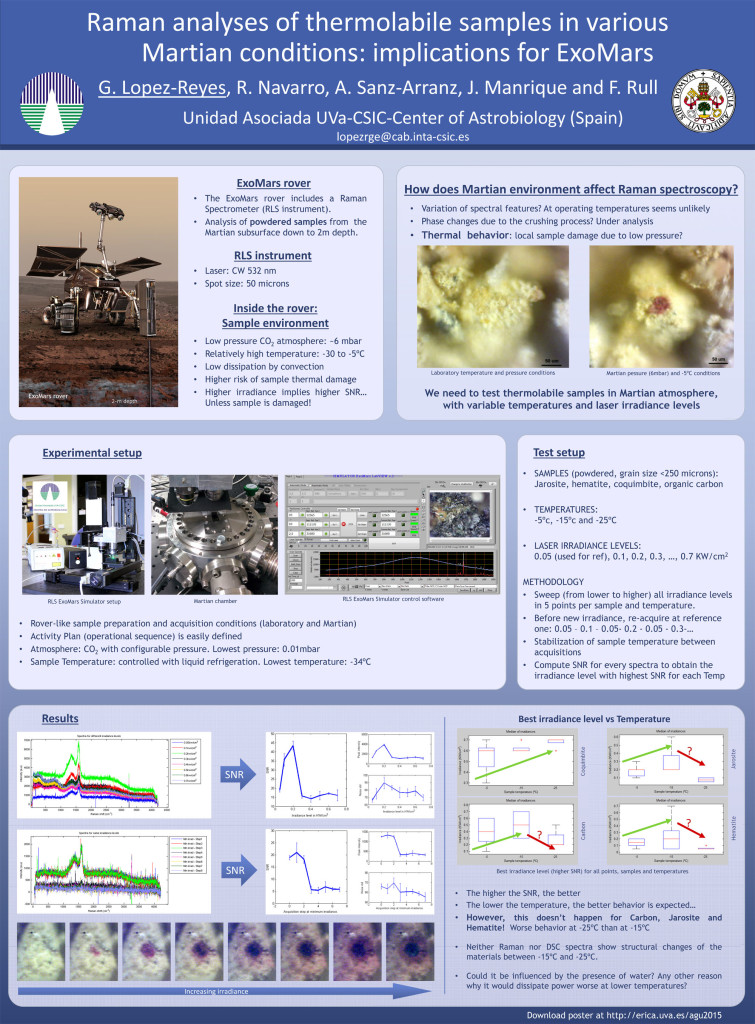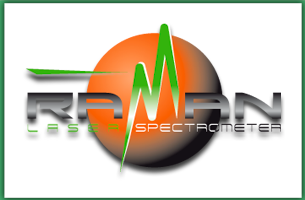Raman analyses of thermolabile samples in various Martian conditions: implications for ExoMars
Guillermo Lopez-Reyes, Rafael Navarro, Aurelio Sanz-Arranz, José Antonio Manrique and Fernando Rull
The Raman Laser Spectrometer instrument (RLS) onboard the ExoMars rover will fly to Mars in 2018. This rover will provide powdered samples to a suite of instruments inside the analytical laboratory drawer of the rover, including the RLS instrument. RLS will analyze up to 30 randomly selected points along a flat surface of the powdered samples. RLS will work autonomously by self-regulating the Raman acquisition parameters (integration time, number of accumulations) as a function of the sample under analysis. However, not all parameters can be adjusted during the operation phase, namely, the laser power and irradiance level on the sample. So, this parameter has to be fixed by design prior to flight. It is well known that thermolabile samples can be damaged (which means a reduction of the signal to noise ratio of the resulting spectra) if the energy provided by the laser cannot be thermally dissipated by the sample. Furthermore, this effect is worsened in low-pressure conditions, where the convective dissipation of the atmosphere is greatly reduced.
In order to study the performance of the instrument with different laser irradiance levels, we have performed a series of analysis on several thermolabile sulfates and oxides, including hematite, jarosite, coquimbite, and also organic carbon. These tests were performed at different temperatures ranging from -40 to -5ºC, in a 6mbar CO2 atmosphere, which will be the operational conditions in which the samples will be found inside the ExoMars rover. A customized vacuum chamber was used to allow analyzing the samples under these conditions.
Though the behavior of the samples can be theoretically established, there are many factors that cannot be easily modeled in the theoretical calculations. Thus, this work in mainly aimed at experimentally observing the resilience of the samples with increasing laser irradiance on the sample surface, and the influence of the sample temperature on these results. The analysis is performed by evaluating the SNR values obtained with each different irradiance level. For these tests, 5 different points of each sample at 4 different temperature levels and 8 different irradiance levels were studied. This provided thousands of spectra that have been analyzed to obtain graphs and to assess the behavior of the samples vs the temperature and irradiance applied. The results presented in AGU 2015 are below.




